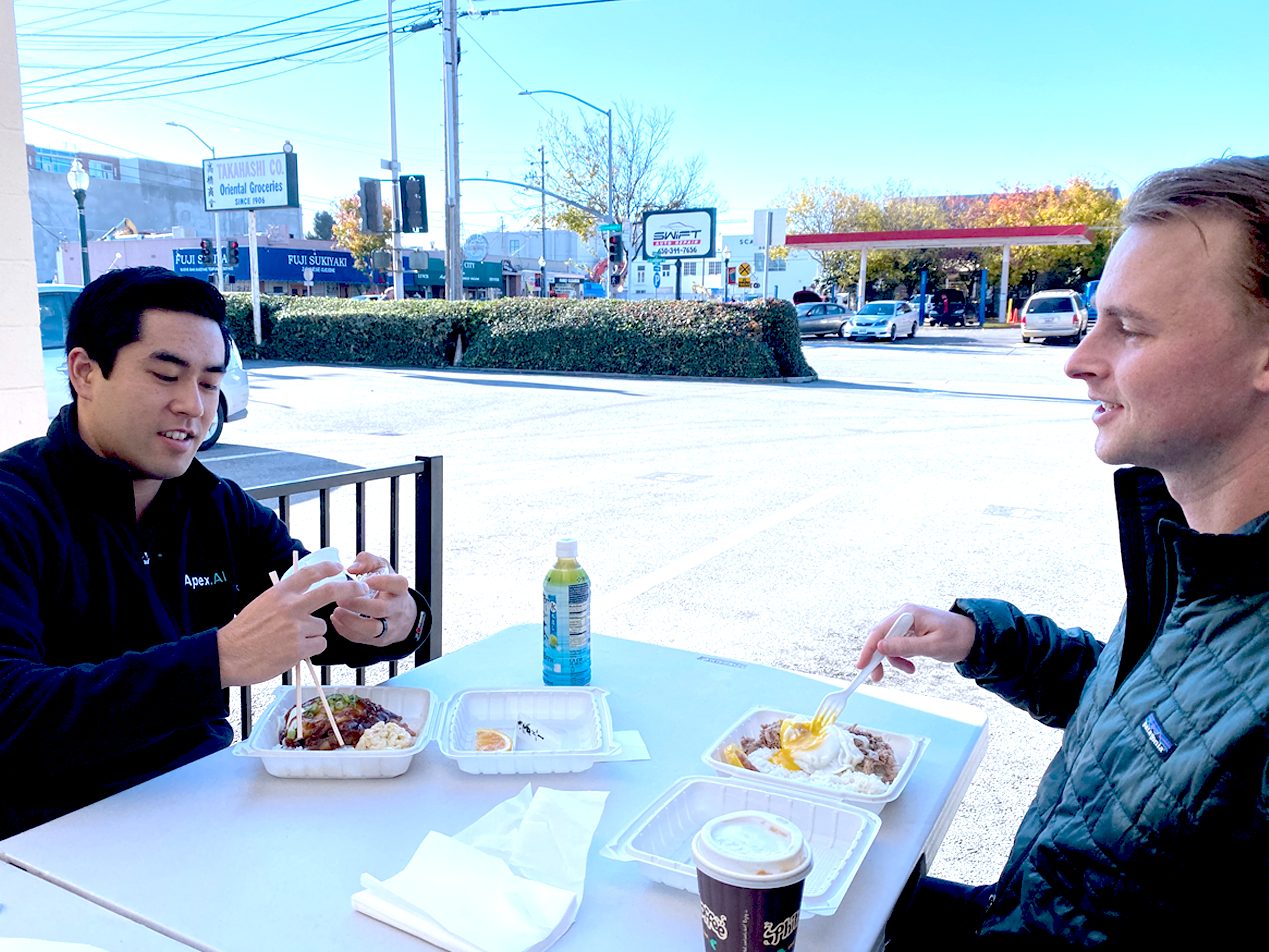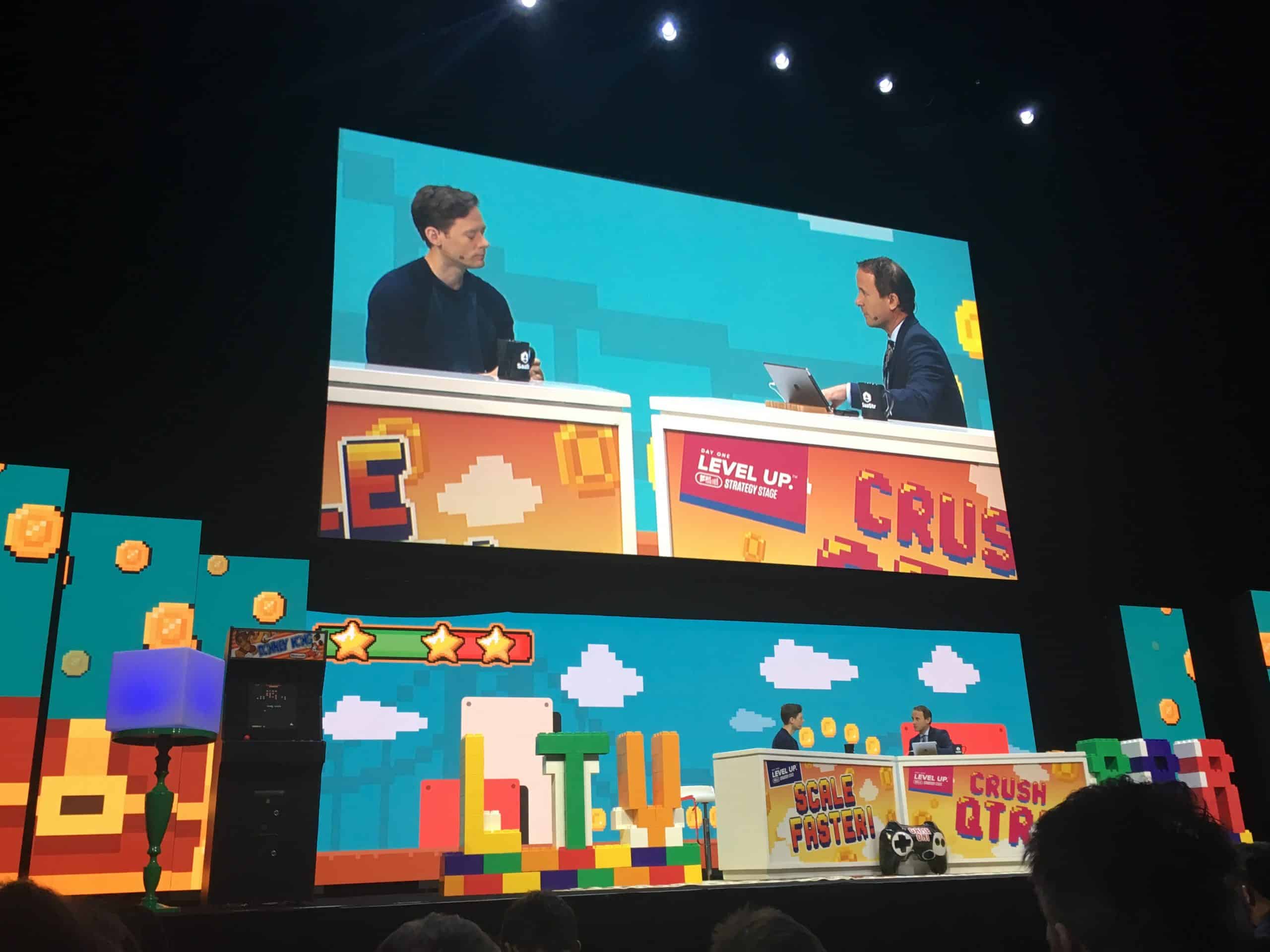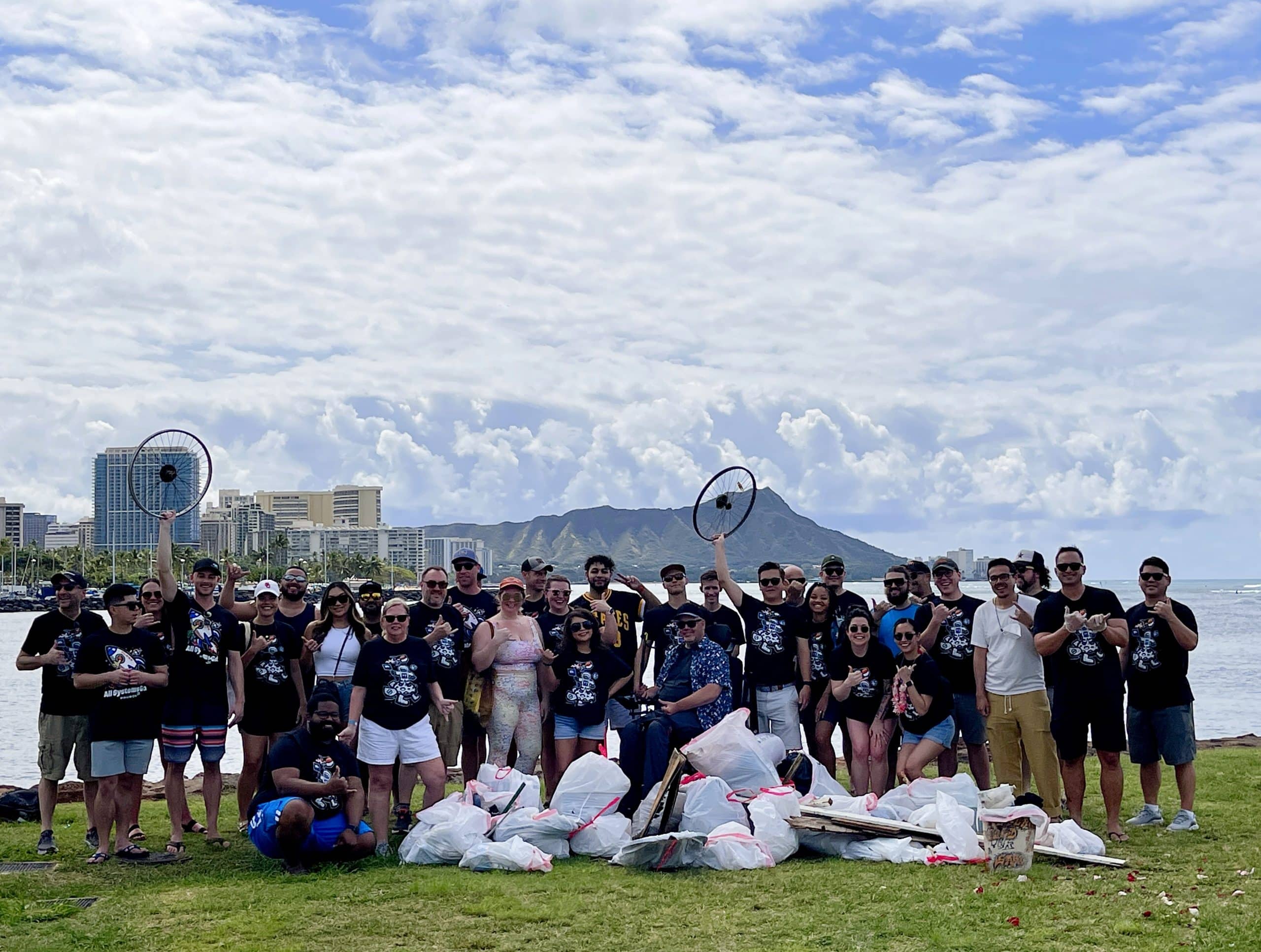
- I recently read Product-Led Growth: How to Build a Product That Sells Itself by Wes Bush.
- Product-led software companies are likely the long-term winners when money becomes more expensive to borrow.
- Here are my takeaways, coupled with recent pictures of the Paubox journey to become the market leader for HIPAA compliant communication.
Part I: Design Your Strategy
Here are my takeaways from Part I: Design Your Strategy:
- “Product-Led Growth is a go-to-market (GTM) strategy that relies on using your product as the main vehicle to acquire, activate, and retain customers.” It was first coined by OpenView.
- “Product-Led Growth isn’t just about disrupting ‘how’ SaaS companies sell, it’s how you survive.”
- As we’ve already seen at Paubox, including a free trial or freemium model is less hassle for the customer and helps them decide quickly decide on a solution.
- Product-led companies still need sales teams. The product however, does the heavy lifting when it comes to getting new customers up to speed.
- “If the only way you can sell a product is if someone talks to you, you’re using a sales-led strategy.”
- “… relying on your sales team to make every sale prevents you from helping you users self-educate. Whether you know it or not, you are adding an incredible amount of friction to the entire buying process.”
- The product-led growth model is best suited for a large total addressable market (TAM) where rapid scale is possible.
- “If you don’t have successful customers, a product-led model may amplify the problem.”
- A big downside of a high-touch, sales-led approach is that the cost to acquire (CAC) is out of control. To assure a sales-led sales model is profitable, the lifetime value (LTV) of a customer has be high enough to recoup the acquisition cost in a reasonable amount of time.
- “If you currently use a sales-led GTM, you need to watch out for competitors with a more efficient customer acquisition model.”
- In a sales-led model, the customer acquisition model is a big leak: the marketing qualified lead (MQL). According to the book, 98% of MQLs never result in a paid customer. Among its problems:
- MQLs encourage marketers to gate content to hit quarterly goals.
- MQLs focus on content consumption as a leading indicator of intent. The two may not be directly correlated.
- MQLs reward creating friction in the buying process.
- “What makes a product-led business unique is that all teams leverage the product to hit their goals.”
- “Implementing a successful Product-Led Growth strategy is difficult.” (as I’m sure we’ll experience)
- Product-led companies tend to scale faster and enjoy much lower CACs:
- “A free trial or freemium model opens up your funnel to people earlier in the customer journey. This is powerful because, instead of prospects filling out your competitor’s demo requests, they’re evaluating your product.”
- “By having your prospects onboard themselves, you can significantly reduce your prospect’s time-to-value and sales cycle. Once people experience the value in your product, the next logical thing to do is upgrade. The quicker your users can accomplish a key outcome in your product, the quicker you can convert your free users into paying customers.”
- “… with a product-led approach, you’re able to do more with fewer people on your team.”
- “… product-led businesses are valued more than 30% higher than the public-market SaaS Index Fund.
- “A free trial is a customer acquisition model that provides a partial or complete product to prospects free of charge for a limited time.”
- “A freemium model is a customer acquisition model that provides access to part of a software product to prospects free of charge, without a time limit.”
- The MOAT framework is:
- Market Strategy: Is it dominant, disruptive, or differentiated?
- Ocean Conditions: Do you have a red or blue-ocean business?
- Red-ocean companies focus on outperforming their rivals to gain a greater share of an existing market. “As the market gets crowded, prospects for profits and growth reduce. Products become commodities, and cut-throat competition turns the bloody ocean red.” In a red ocean where prospects already how your product can help, a product-led model is superior because it widens the funnel, decreases CAC, and accelerates market expansion.
- Blue-ocean companies access an untapped market and create the demand themselves. Competition is irrelevant here, as the window of opportunity is so large. “If you’re in a blue ocean and have a quick time-to-value in your product, use a product-led model.”
- Audience: Do you have a top-down or bottoms-up marketing strategy?
- “When using the top-down selling strategy, your sales team targets key decision-makers and executives… One reason the top-down sales strategy exists is that businesses want uniformity… If you’re selling large deals, top-down systems are essential.”
- A bottom-up strategy requires quick adoption and simplicity. “A bottom-up selling strategy works almost exclusively with a product-led go-to-market strategy… In the B2B space, most products employ a low-touch, bottom-up sales model in which sales reps target users who take specific actions in the product… By having users onboard themselves, you can significantly reduce your prospect’s time-to-value and sales cycle.”
- Time-to-value: How fast can you demonstrate value?
- “If your product has a freemium model and a top-down selling strategy, the two approaches will repel each other.”
- Implementing a free trial with a top-down selling strategy is a gray area.
- “A bottom-up approach lets the prospective customer discover the product’s value on their own.”
- “To create a successful product-led business, you need a quick time-to-value. New users need to be able to experience a key outcome in your product quickly and without any assistance.”
- Eliminate all unnecessary steps in onboarding new users.
Part II: Build Your Foundation
Here are my takeaways from Part II: Build Your Foundation:
- The UCD framework is:
- Understand your value
- Communicate the perceived value
- Deliver on what you promise
- What outcome do users expect when they buy your product?
- “Most technology companies get caught up in the features and don’t really know why people buy their product.”
- “To build a successful product-led business, you need to understand the three main outcomes that motivate the purchase of your product.”
- Functional Outcome. These are the main tasks customers want to achieve. “Most companies forget to consider the emotional and social outcomes. If you don’t know the emotional or social outcomes people are looking for when buying your product, you could be missing out on some serious profitability.”
- Emotional Outcome. How customers what to feel or avoid feeling as a result of achieving the functional outcome.
- Social Outcome. How customers want to be perceived by others by using your product.
- “In every software product, there are usage patterns that point us toward the core outcomes that are most important to our customers. One of the biggest differences between sales- and product-led companies is that the latter consistently monitor these usage patterns to see if users are accomplishing meaningful outcomes.”
- “A value metric is the way you measure value exchange in your product.”
- “Value metrics are the linchpin to successful execution of a product-led go-to-market strategy. Why? Because you’re aligning your revenue model directly with your customer acquisition model.”
- Functional value metrics can be things like “per user” or “per 100 views.” Pricing scales around a function of usage.
- Outcome-based value metrics charge based on a outcome. An example here would be Stripe’s pricing model, where charges are based on transaction amounts.
- “Sometimes it’s hard to perfectly measure how much money someone gained from using your product or how much that time you saved them is worth.”
- A great value metric has to pass three tests:
- Easy to understand. “When someone visits your pricing page, they will immediately understand what they’re paying for and where they fit in your packaging?”
- Aligns with value received by customer. What core components lead someone to experience a meaningful outcome?
- Grows with customers’ use of that value. If customers get tremendous value from your product, charge more. “One of the most common traps is charging per user” (I do not agree.)
- “In a product-led company, your customer acquisition model is built around your product.”
- Four common pricing strategies:
- Best-Judgement Pricing. “Best judgement pricing is the least effective pricing strategy because you rely on the collective experience of your team, and you make assumptions about what your buyer values and is willing to pay.”
- Cost-Plus Pricing. This where you calculate the cost of selling and delivering the product, then adding a profit. According to the book, cost-plus pricing most likely hurts your profit potential.
- Competitor-Based Pricing. This model benchmarks pricing based on what your competitors are charging. The book notes: “The other interesting part about competitor-based pricing is that you’re assuming that your competitor has done their customer and pricing research, which isn’t necessarily the case.” It’s even argued that sever out of ten companies don’t do their own pricing research.
- Value-Based Pricing. “Value-based pricing bases your price on the value you provide. According to the book, the only viable option in software as a service (SaaS) is value-based.
- How to determine price:
- Pricing Economic Value Analysis. A good approach is you’re just starting out and don’t have a lot of data. Try breaking down customers’ perceived value across the three core outcomes, functional, emotional, and social.
- “From a functional perspective, what does your product help people do?”
- When it comes to emotional outcome, how do customers want to feel, or avoid feeling, as a result of using your product?
- From an emotional outcome standpoint: “It’s extremely hard to place a number on what a promotion is worth to someone, or how much it’s worth to feel like a ‘professional’ during a presentation.” Do your best to make your customers “look like a badass for choosing your product.”
- “A very good way to determine your price is to follow the 10X Rule. ‘We charge this much because our customers get at least 10X that much value.'”
- Refine your pricing model by continually asking customers about the value they get your product.
- Market and Customer Research. Recommended approach if you have lots of customers, as it’s more accurate than economic value analysis. The author Wes Bush explains a model based on the Van Westendorp Price Sensitivity Meter. One of its main benefits is that it will help you find an acceptable price range. Here are the four questions to ask to find the ideal price range:
- Too Expensive. At what price point would you consider the product to be so expensive you wouldn’t buy it?
- Expensive. At what price point would you consider the product expensive but not out of the question?
- Bargain. At what price point would you consider the product a great deal?
- Too Cheap. At what price point would you consider the product so cheap that you would feel its quality poor?
- The sweet spot is between good value (bargain) and expensive. The best people to ask are customers and product qualified leads (PQLs). You can ask them either via survey tools or interviews.
- “At the intersection of ‘Too Expensive’ and ‘Not Expensive,’ we find the Point of Marginal Expensiveness (PME). This is an excellent place to be- the point where people start to consider our product expensive.”
- Pricing Economic Value Analysis. A good approach is you’re just starting out and don’t have a lot of data. Try breaking down customers’ perceived value across the three core outcomes, functional, emotional, and social.
- The Pricing Page
- There are four elements to a successful pricing page:
- Value Metric. If you have a functional or outcome-based value metric, it must be a core component of the pricing page.
- Willingness to pay for all packages. This is based on market research that’s already been done.
- Valued features. There are three main categories here, leaders, fillers, and bundle killers.
- Demographic information. Savvy businesses name the pricing tier after each of their personas or give it a nickname to signify the type of buyer who often purchases that plan.
- There are four elements to a successful pricing page:
- Perceived Value & Experience Value
- “What we promise in our marketing and sales is the perceived value. What we deliver in our product is the experienced value. Ideally, the perceived value aligns with the experienced value.” The value gap is the delta between the two.
- This is why product-led businesses are setup for success- they allow people to try before they buy and experience the value proposition themselves.
- “Tackling your value gap can be the single, most profitable lever you can pull.”
- Value gap indicators:
- Ability debt. “Ability debt is the price you pay every time your user fails to accomplish a key outcome in your product.” To reduce ability debt, you must be ruthless about removing friction. Ability debt never goes away, btw. Ask yourself, does the first experience lead to a specific, quick win? Are all unnecessary points of friction and distraction removed from critical workflows?
- Failure to understand why customers buy. “Until you know what your users are trying to accomplish in your product, you’ll lead them to mountaintops they never wanted to climb.” Ask yourself, what outcome does your product help people with?
- Poorly communicating value. “Delivering on your value and reducing your value gap starts and ends with helping people.”
- Wes Bush has noticed it’s often the Chief Technology Officer (CTO) or VP of Sales who shut down product-led initiatives. It’s also vitally important to get the CEO onboard.
- How to launch a free trial in one hour:
- Update “Request a Demo” CTA to a “Request a Free Trial” CTA.
- On your demo landing page, changed the text from “demo” to free trial.”
- When running an onboarding session with a new prospect, seek out three outcomes:
- Write down the key outcomes they want to accomplish. Document this in a spreadsheet. “Over time, you’ll find out what need to be automated by the sheer number of requests and how painful they are for your team to manage.”
- Focus on where you need to offer a helping hand. “When reviewing onboarding sessions, take special notes of when people mess up.”
- Clear out garbage. “When it comes to your onboarding, every step that doesn’t help your user experience a meaningful outcome should be removed.”
- “By challenging each step in your onboarding, you’ll create a superhighway for your users to accomplish a key outcome in your product.”
- Most SaaS companies launch a product-led growth model and then fail to update it. Why? Because nobody takes ownership.
- Put together a small team to own your product-led growth. Ideally these are people who already work at the company. You’ll need seven people (merging of roles is ok):
- Developer
- UI/UX Designer
- Product Manager
- Customer Success Manager
- Digital Marketer
- CEO
- Chief Product Officer (CPO) or Chief Technology Officer (CTO)
- “Note that the biggest bottlenecks to optimizing your product-led model have nothing to do with your product- it all comes down to having the right team and process in place. With that team in place, the next step is to develop an ongoing optimization process.”
Part III: Ignite Your Growth Engine
Here are my takeaways from Part III: Ignite Your Growth Engine:
- The Triple A sprint:
- Analyze. Until you know the inputs the drive your desired outputs, you’ll stall building a sustainable SaaS business. “Create a recurring calendar notification to remind yourself to analyze your previous month’s results on the first workday of each new month. Block off one or two hours so that you’ll have the time to do a thorough job. You’ll get into a rhythm of analysis.” Here are the outputs to track for a product-led business:
- Number of signups
- Number of upgrades
- Average Revenue Per User/Customer (ARPU)
- Customer Churn
- Annual Recurring Revenue (ARR)
- Monthly Recurring Revenue (MRR) <= I’m not sure why both ARR and MRR are needed here.
- Once we know the outputs, we can ask questions to identify the inputs needed.
- Ask. To grow your business, ask these three questions:
- Where do you want to go?
- Which levers can you pull to get there? Using Jay Abraham’s multiplier perspective:
- Churn
- ARPU
- Number of customers
- Reducing churn and increasing ARPU will nearly always have the biggest impact.
- Which inputs should we invest in? Use the UCD framework help you find the right inputs to measure. For example, remove every piece of onboarding that doesn’t deliver on your value. “One way to find opportunities to improve the buying experience is to buy your product once a month.” Consider using the ICE prioritization method to create a defined process of improvement:
- Impact. How big an impact will this input have on output?
- Confidence. How confident are you the input will improve output?
- Ease. How easy is it to do?
- Act. Ideas are easy. Execution is key. Start small if this is your first Triple A sprint. Get some quick, easy wins that have mid-to-high impact.
- “… if you have a good product that customers love, you’ll see a monumental shift if you go through a Triple A sprint each month.”
- “Process beats tactics. Following the Triple A sprint framework puts you on track to grow your business consistently.”
- Analyze. Until you know the inputs the drive your desired outputs, you’ll stall building a sustainable SaaS business. “Create a recurring calendar notification to remind yourself to analyze your previous month’s results on the first workday of each new month. Block off one or two hours so that you’ll have the time to do a thorough job. You’ll get into a rhythm of analysis.” Here are the outputs to track for a product-led business:
- The Bowling Alley Framework:
- “When it comes to increasing your customer base, use bumpers to guide your user to the outcome that your product promises.”
- Do these three things to master the Bowling Alley Framework:
- Develop your straight line. “One of the best ways to remove pain and friction is to develop a straight-line onboarding experience.” Do this by letting prospects try before they buy and by doing everything you can to help them experience the value of your product.” Here are recommendations to building a straight line:
- Map out the path. On average, over 30% of required user onboarding steps are garbage.
- Label every checkpoint.
- Develop your your straight line (again?).
- Create a product bumper. These are mission critical. They help new users adopt the product with the app itself. Product bumpers are usually more important than conversational bumpers. Product tours are the ultimate product bumper (3-5 steps recommended in a product tour). “If you have a multi-product business, using a product tour at the beginning of your onboarding can be a gamechanger.” Remember: use product bumpers only when there’s a need.
- Build a conversational bumper. These work to educate new users, bring them back to the app, and eventually upgrade to a paid account. One of the best conversational bumpers are onboarding emails. A big challenge here is figuring out which emails need to be sent. The best onboarding emails are an extension of your product.
- Aim for at least a 60% open rate on your welcome email. There are two goals here with a welcome email: training your audience to open your emails and setting expectations for what’s coming next.
- Make sure your welcome email isn’t complicated and has a clear call to action. It’s recommended not to use images and go with plain text for the first email (i.e., the welcome email).
- Usage-tip emails: “Usage-tip emails are helpful nudges that direct users to take steps in the product that setup them up for success… Don’t send emails that ask users to complete items that aren’t part of your straight-line onboarding track.” The best usage tip are trigger-based and sent once an onboarding action is completed (or not).
- Sales-touch emails: “These emails can be automated, but the most important part is timing… The sweet spot for sending sales-touch emails is as soon as you deliver on your value…”
- Case-study emails: “Whether you send a case-study email that includes a video testimonial, customer story, or old-fashioned case study, tell your customer’s story about using the product.” Make sure this email answers the “what’s in it for me?” question.
- Better-life emails: These emails communicate the benefits of the product. Rather than telling a customer story, they focus on communicating product benefits (i.e., showcase how your product improves a user’s life). Don’t forget to focus on functional, social, and emotional outcomes here. For example, when talking to prospects, what benefits get them the most excited?
- Expiry-warning emails: These emails remind the user to upgrade before a free trial period ends. “If you have an opt-out free trial (you require a credit card upfront), you must send expiry-warning emails.” As a general rule, make it easy to cancel a trial.
- Make sure to give a few days notice before the trial ends so there’s no surprises. “I recommend sending an expiry-warning email at least three days before the end of each user’s trial.”
- “One of the biggest mistakes I see companies make with expiry-warning emails is not including the product’s main value proposition.”
- Customer-welcome emails: Send these as soon as users convert to paid customers. Don’t make customers think twice. Remind them why they made the right choice. Use these emails to:
- Reassure customers they made the right decision
- Remind them what they can do with the product
- Set expectations for what’s next
- Post-trial survey emails: Use these emails to understand why free trial users don’t convert.
- Smart Signals: These four signals indicate when you should send a specific conversational bumper to keep users on a straight line:
- Signup
- Quick win
- Desired outcome
- Customer
- Develop your straight line. “One of the best ways to remove pain and friction is to develop a straight-line onboarding experience.” Do this by letting prospects try before they buy and by doing everything you can to help them experience the value of your product.” Here are recommendations to building a straight line:
- Hick’s Law is a theory that decision time increases with every additional choice, while the Paradox of Choice is a maxim that more choices make people less likely to make a choice. “By eliminating the number of decisions a new user has to make, you increase the likelihood that they will make the right decision.”
- “Effective progress bars start with a substantial percentage of the bar already filled.”
- Checklists can serve to break down big tasks into smaller, achievable ones.
- Endowed progress effect: Consider having part of your onboarding checklist partly filled out from the beginning.
- The sweet spot is 3-5 checklist items
- Zeigarnik effect: The tendency to think about incomplete tasks more than completed ones.
- Be careful with tooltips, a lot of companies use them incorrectly
- “People do not use software simply because they have tons of spare time and find clicking buttons enjoyable.” Samuel Hullick
- Empty state: These can show users what they need to do to setup their account and experience value. “One of the benefits of empty states is that you immediately show users what needs to be done.”
- To decide what to include in an empty state:
- What steps need to be completed to experience a quick win?
- What’s the most important step?
- How can you ensure a majority of users will complete the step?
- To decide what to include in an empty state:
- Knowing your ARPU (or in our case, Average ARR per customer) will reveal which customer acquisition channels you can afford to use. For example:
- High ARPU: Enterprise sales team
- Mid ARPU: Inside sales team, paid ads
- Low ARPU: SEO, content marketing, virality
- Product-led businesses marry revenue to customer acquisition models.
- “Simply increasing your prices for inflation can have an incredible impact on ARPU over the years.”
- When it comes to logo churn, here are industry averages:
- SMB: 31-58% annual logo (customer) churn
- Mid-Market: 11-22%
- Enterprise: 6-10%
- “A robust customer onboarding process is one of the most powerful ways to reduce churn.”
- Once again, to chip away at ability debt, be ruthless about removing friction.
- When a customer churns, ask a single survey question: “Why did you decide to cancel your account?”
Subscribe to Paubox Weekly
Every Friday we'll bring you the most important news from Paubox. Our aim is to make you smarter, faster.



 Hoala Greevy
Hoala Greevy


